Abstract
1. A technique for perfusion of skin has been used to investigate a possible neurochemical basis for the different patterns of sweating in domestic animals. Evaporative water loss was measured from excised trunk skin, ears or tails perfused with a nutrient Krebs solution, to which drugs were added as required. Perfused skin was observed to sweat in response to administration of sudorific drugs, and some features of the patterns of sweating were similar to those which could be induced by heating or by drugs in conscious animals. 2. In sheep and goat skin, injections of adrenaline, and to a lesser extent of noradrenaline, elicited brief sweat discharges but these were not sustained when the drugs were infused during 10-20 min. Injections of isoprenaline, carbachol, 5-HT, bradykinin, oxytocin and histamine were all ineffective. 3. Injections of adrenaline into cattle skin evoked longer-lasting sweat discharges, and infusions of adrenaline elicited continuous discharges. Injections of noradrenaline and sometimes of bradykinin caused only brief sweat discharges; other drugs were ineffective. 4. In horse and donkey skin, injections or infusions of noradrenaline, oxytocin and bradykinin elicited brief discharges of sweat. Infusions of isoprenaline caused a continuous and profuse outflow of sweat. Infusions of adrenaline also caused a continuous discharge which was usually biphasic in its onset. Other drugs were ineffective. 5. Assuming that the brief sweat discharges are due to myoepithelial contractions and the continuous discharges to sustained increases in secretion, equine sweat glands seem to have a alpha-adrenergically controlled myoepithelium and a beta-adrenergically controlled secretory mechanism. Sheep and goats may have a similar alpha-adrenergic control of the sweat gland myoepithelium but only a feeble sweat secretory mechanism. In cattle, an alpha-adrenergic mechanism appears to control sweat secretion, but the control of the myoepithelium is uncertain.
Full text
PDF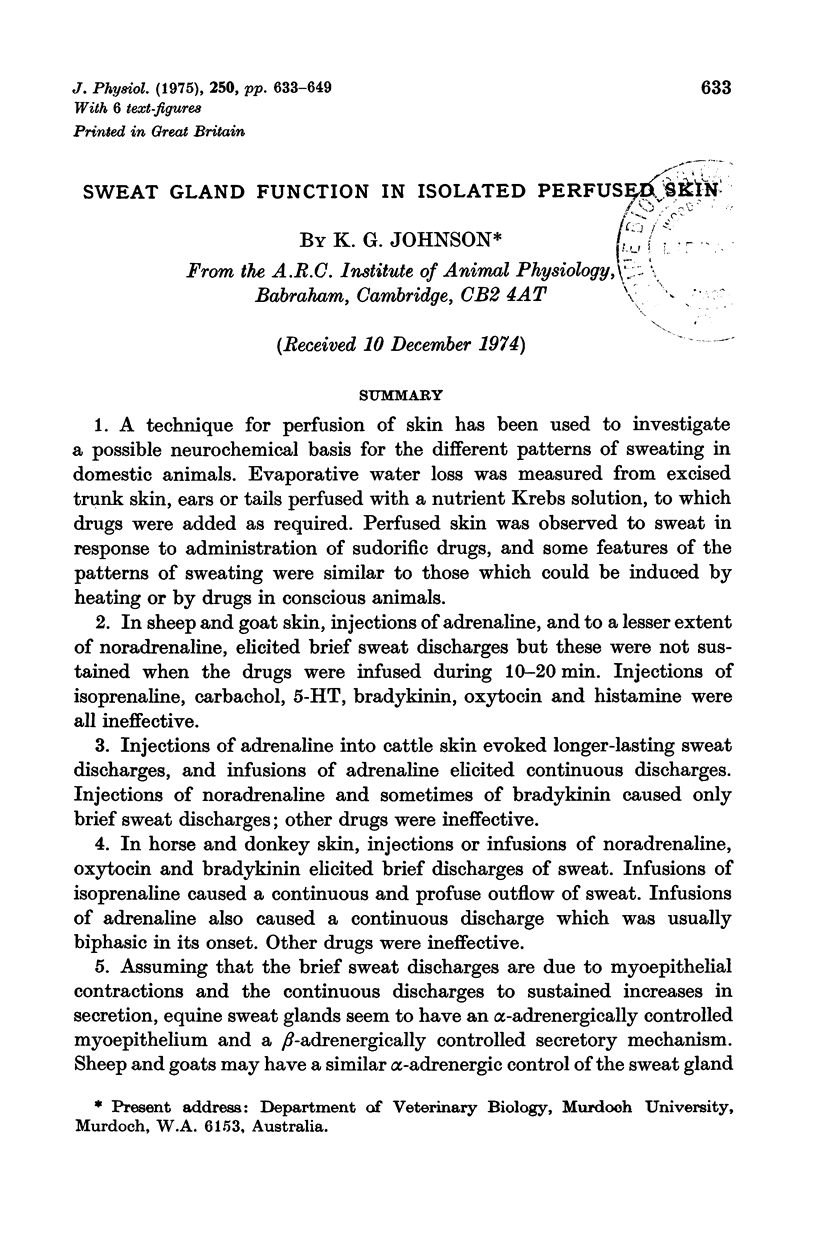
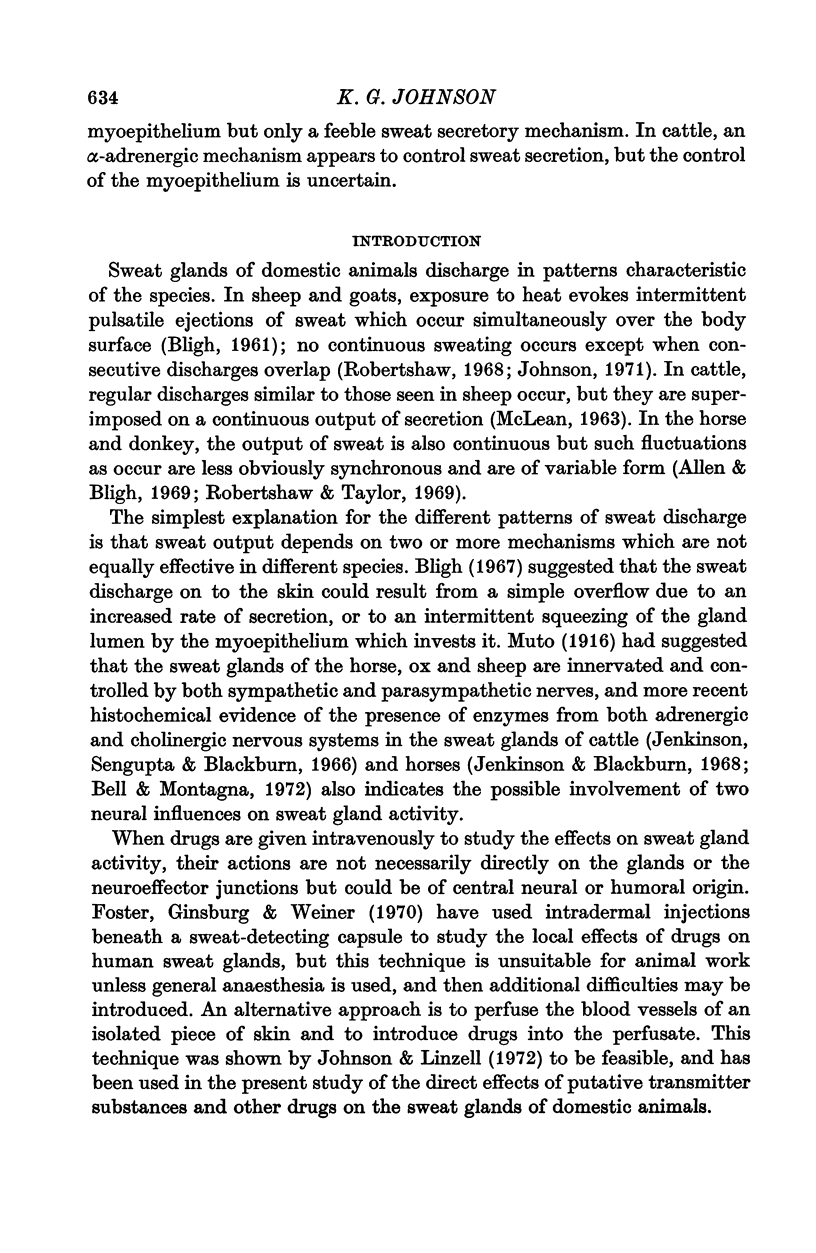
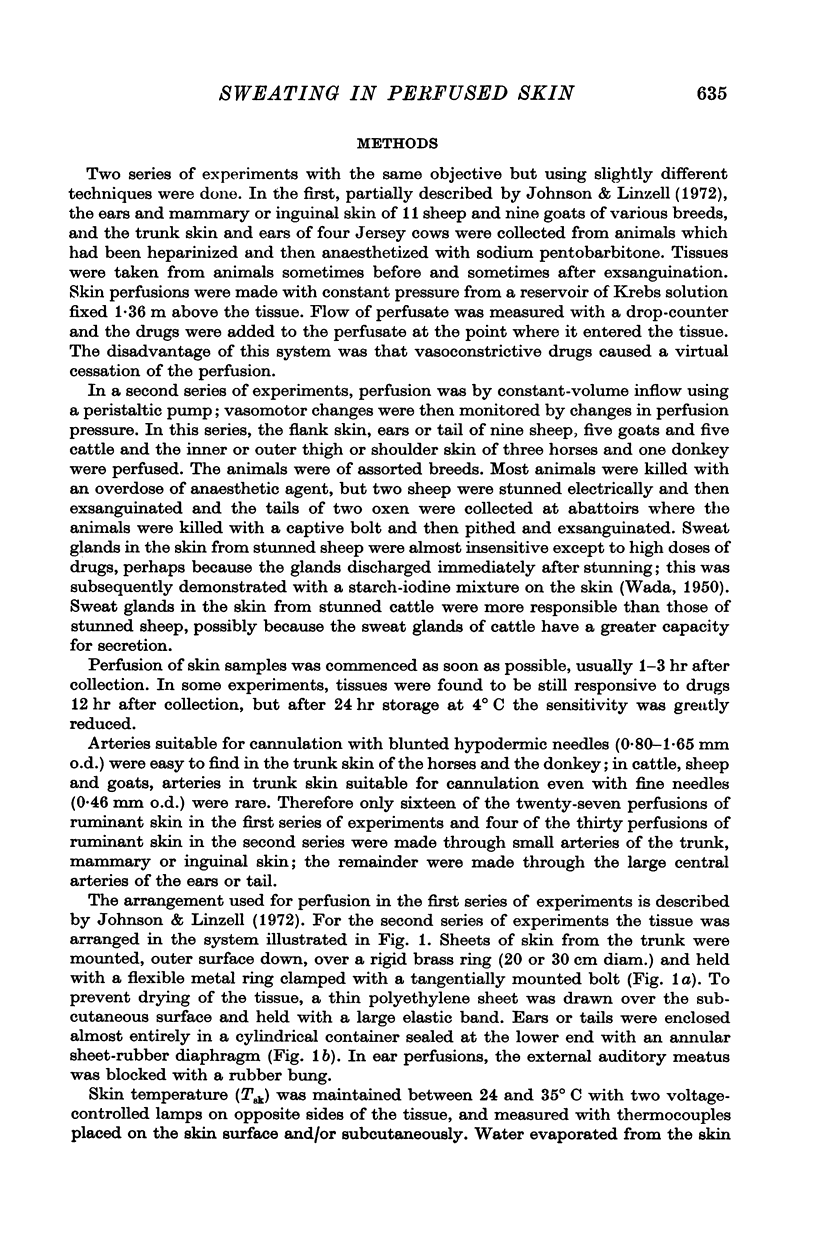
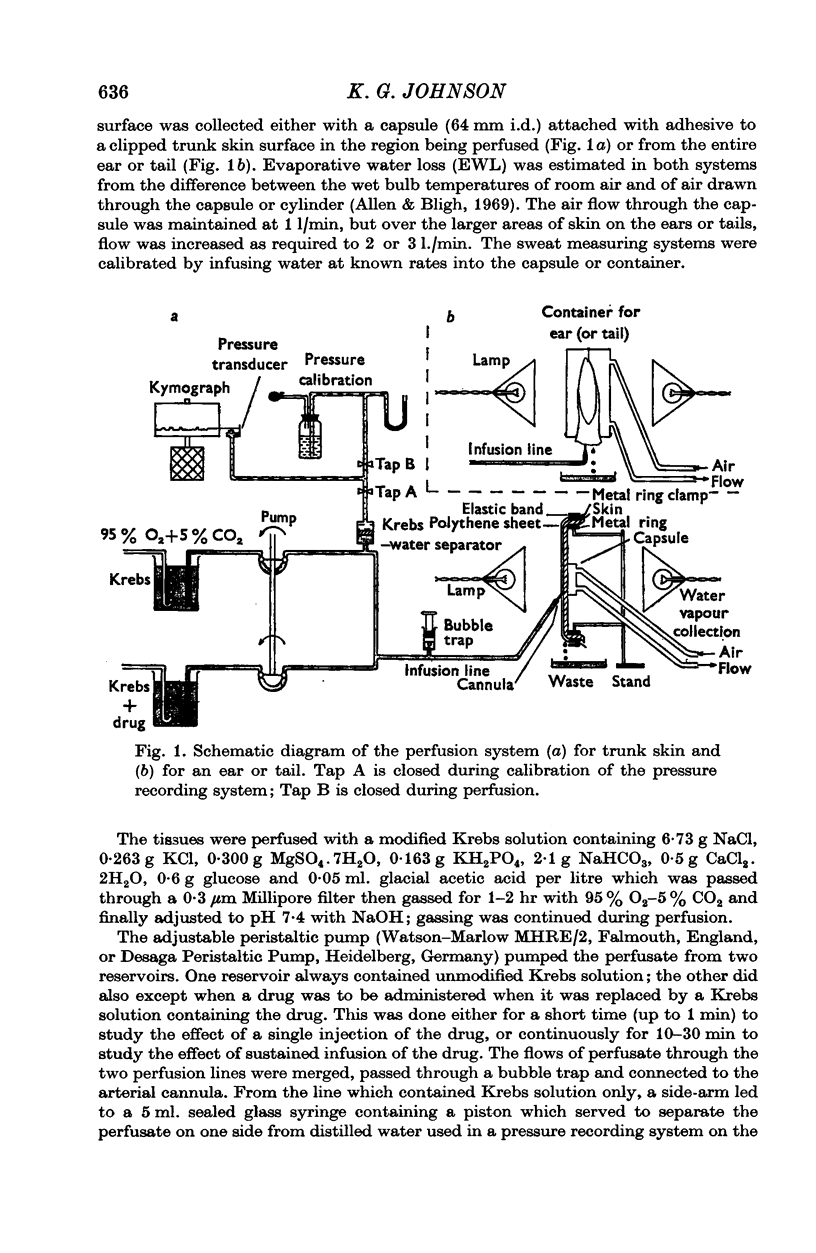
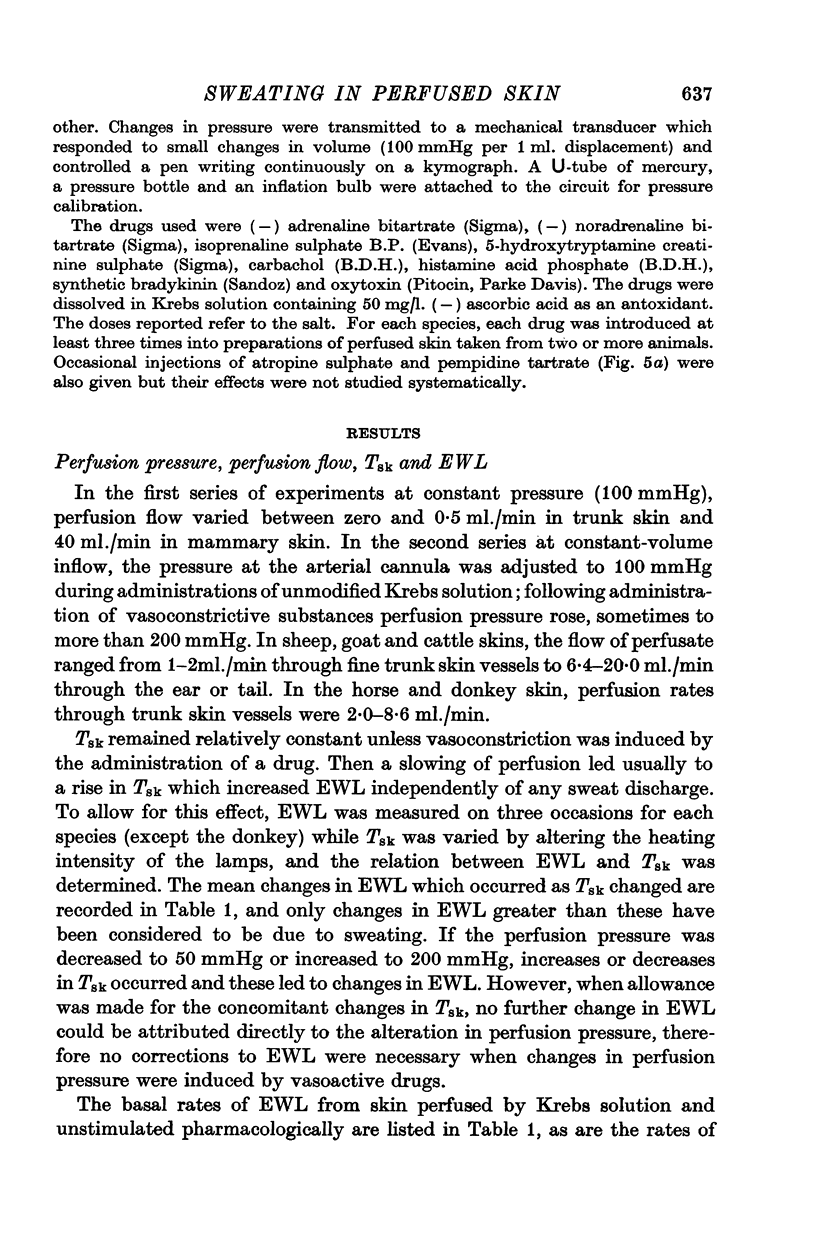
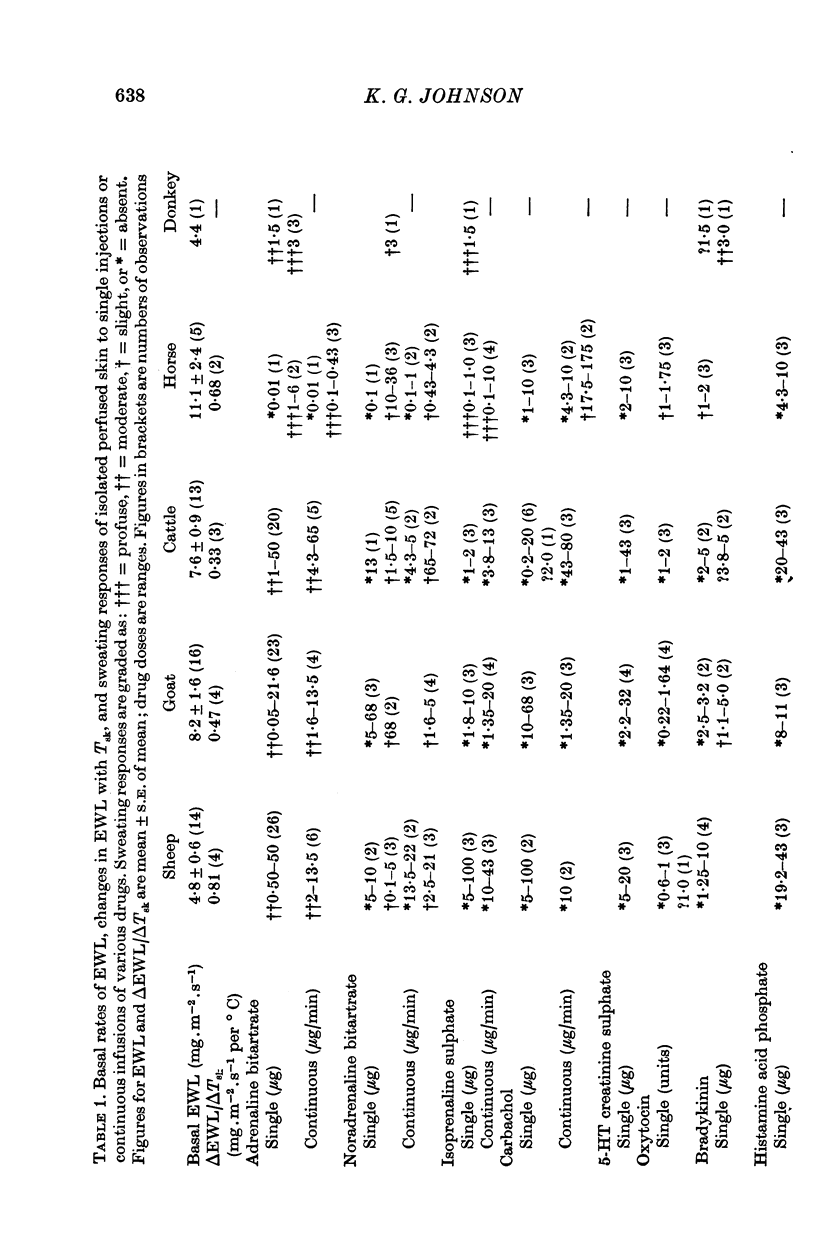
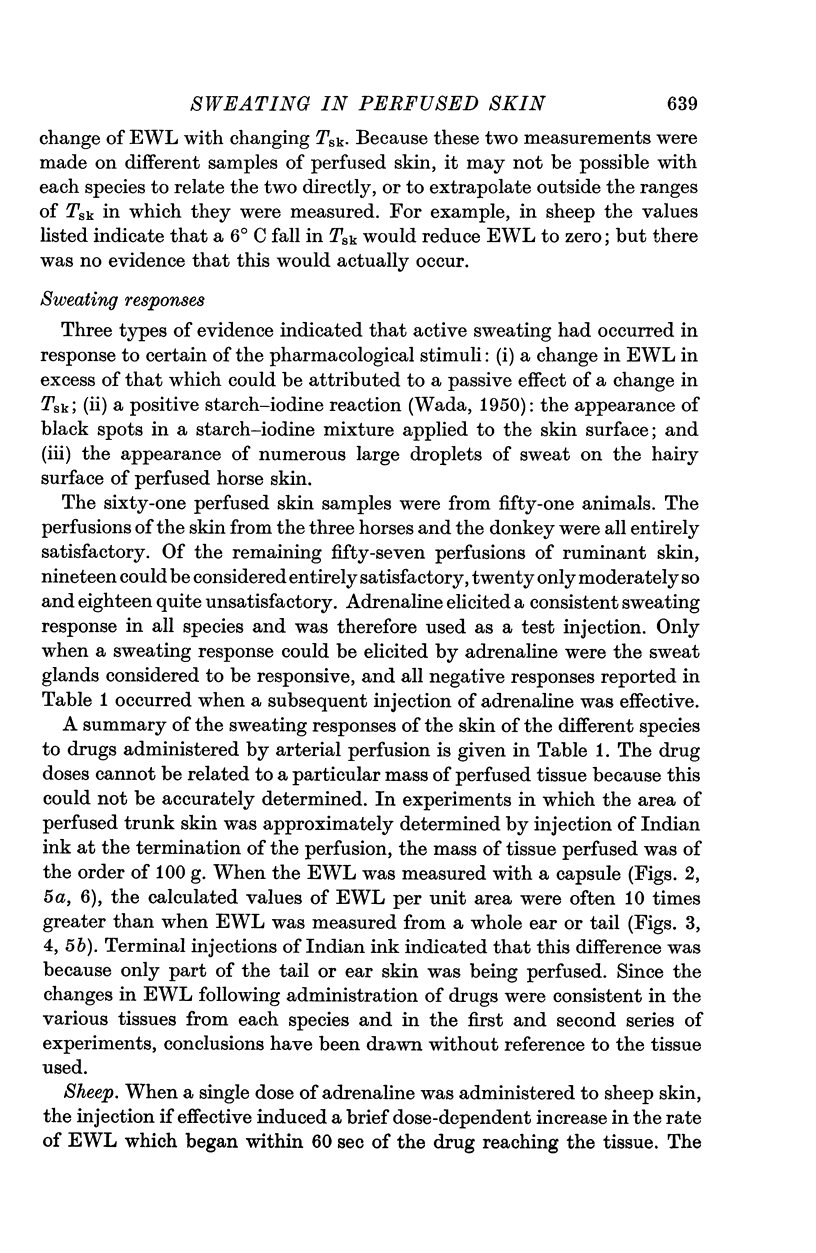
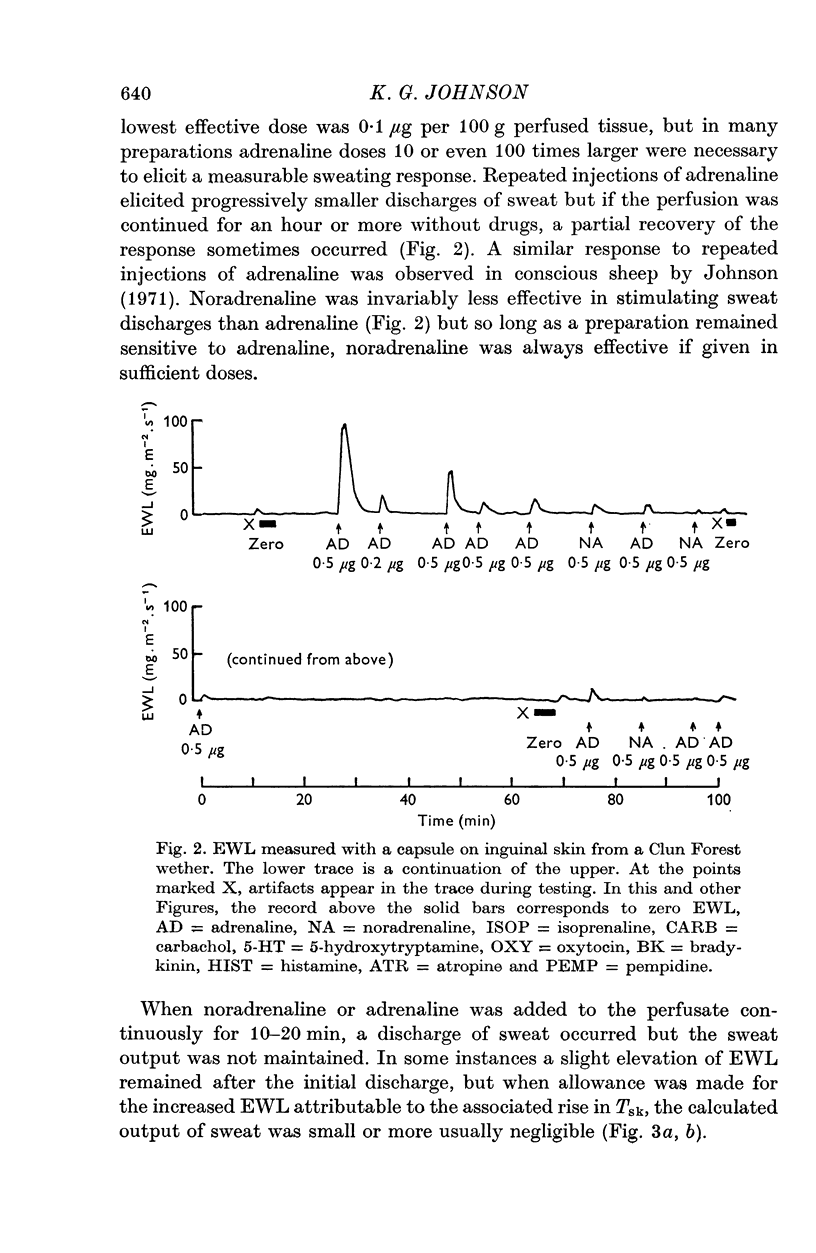
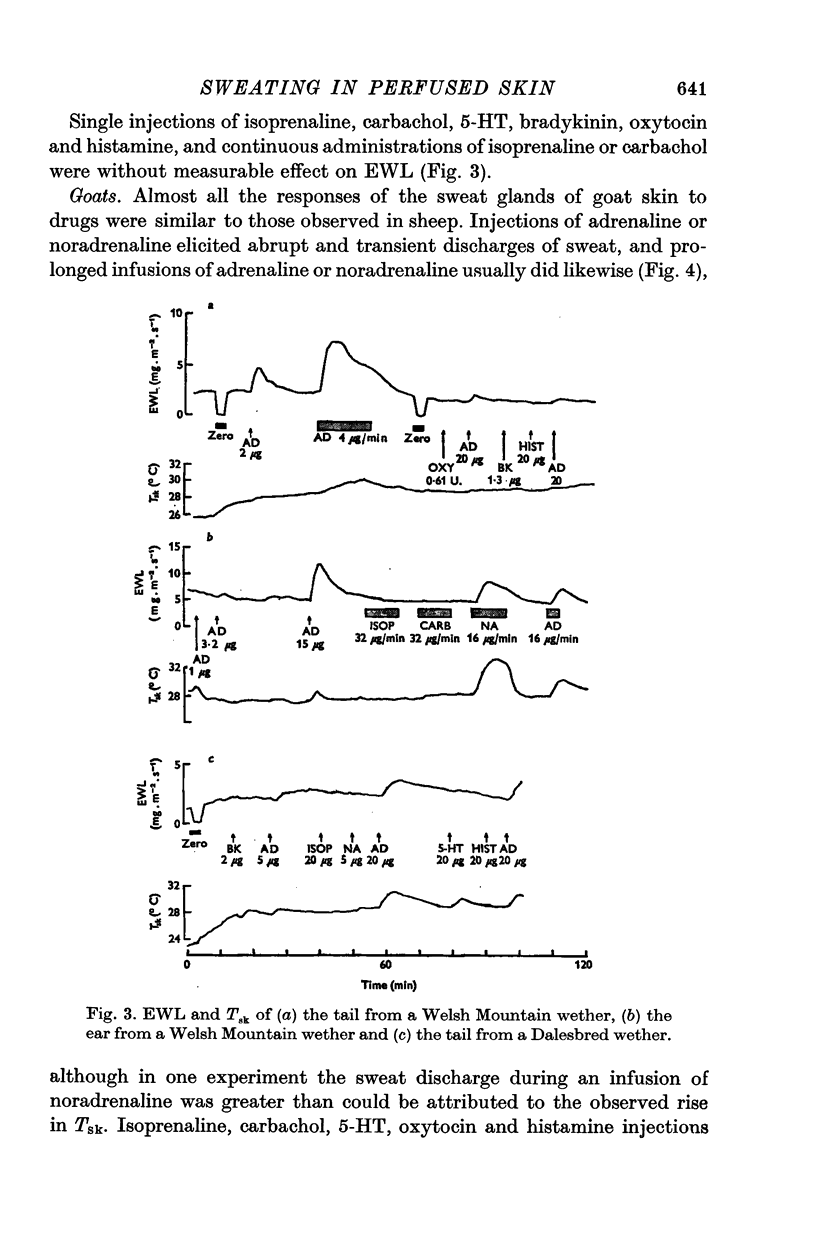
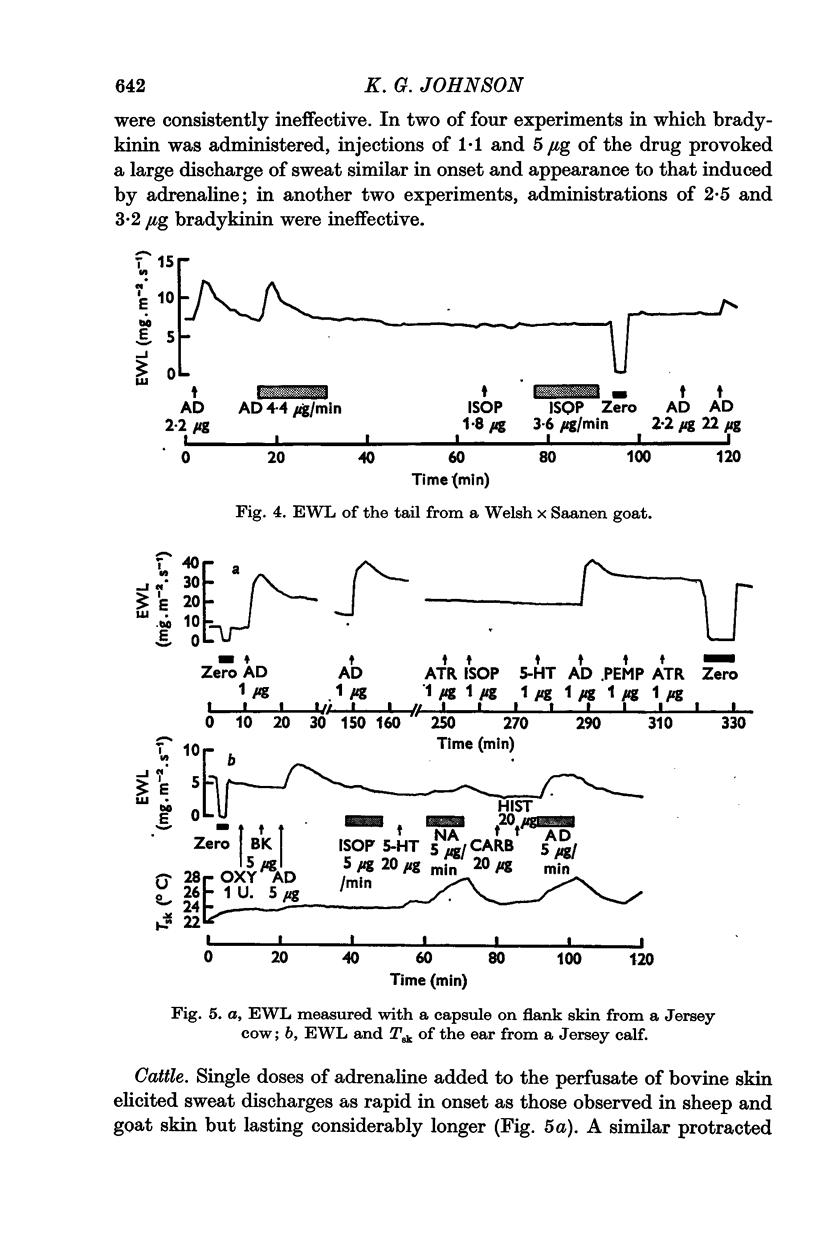
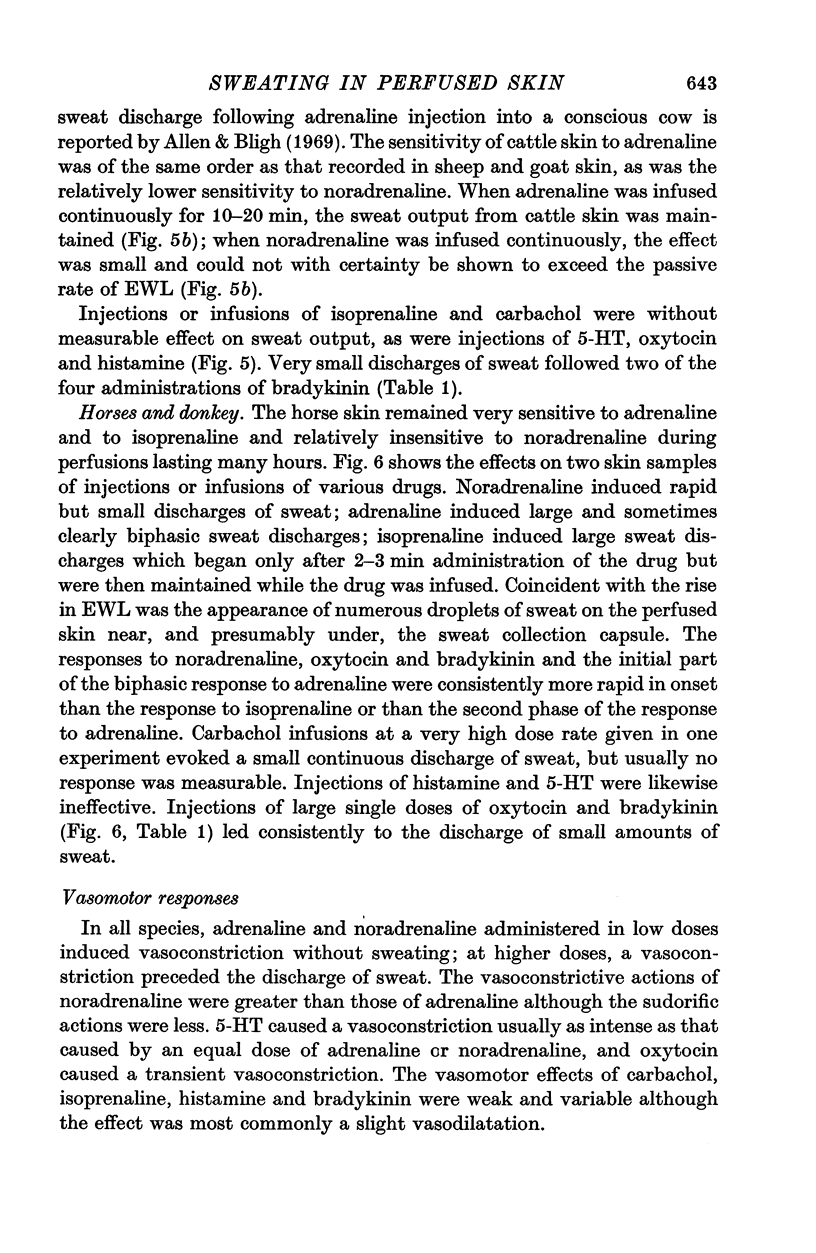
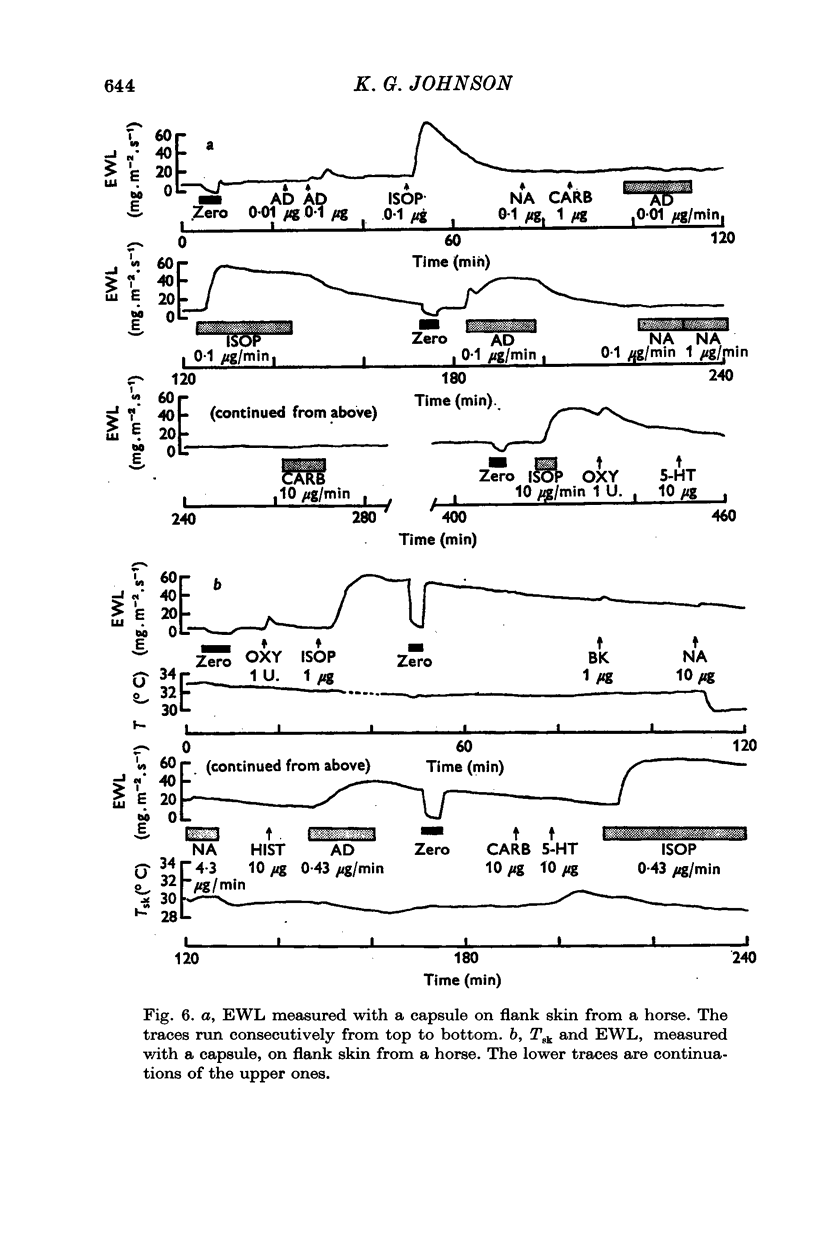
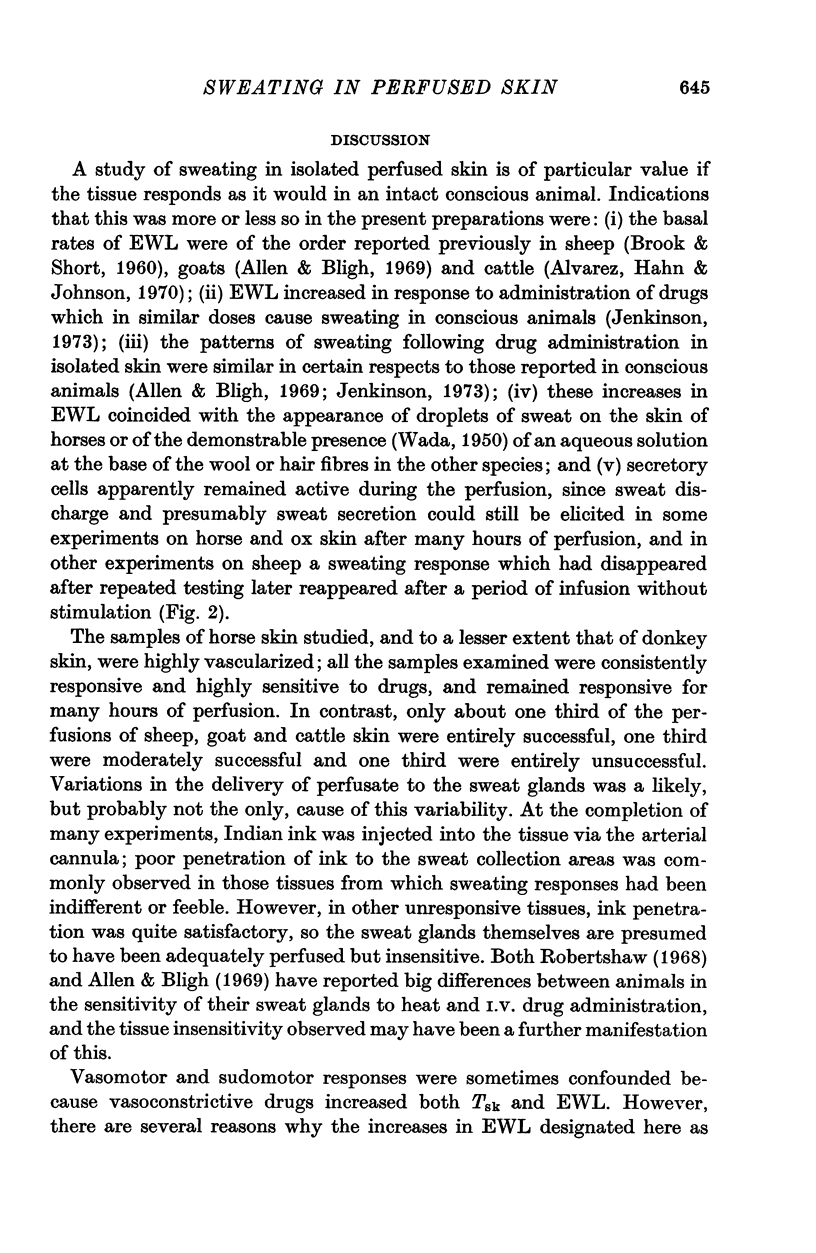
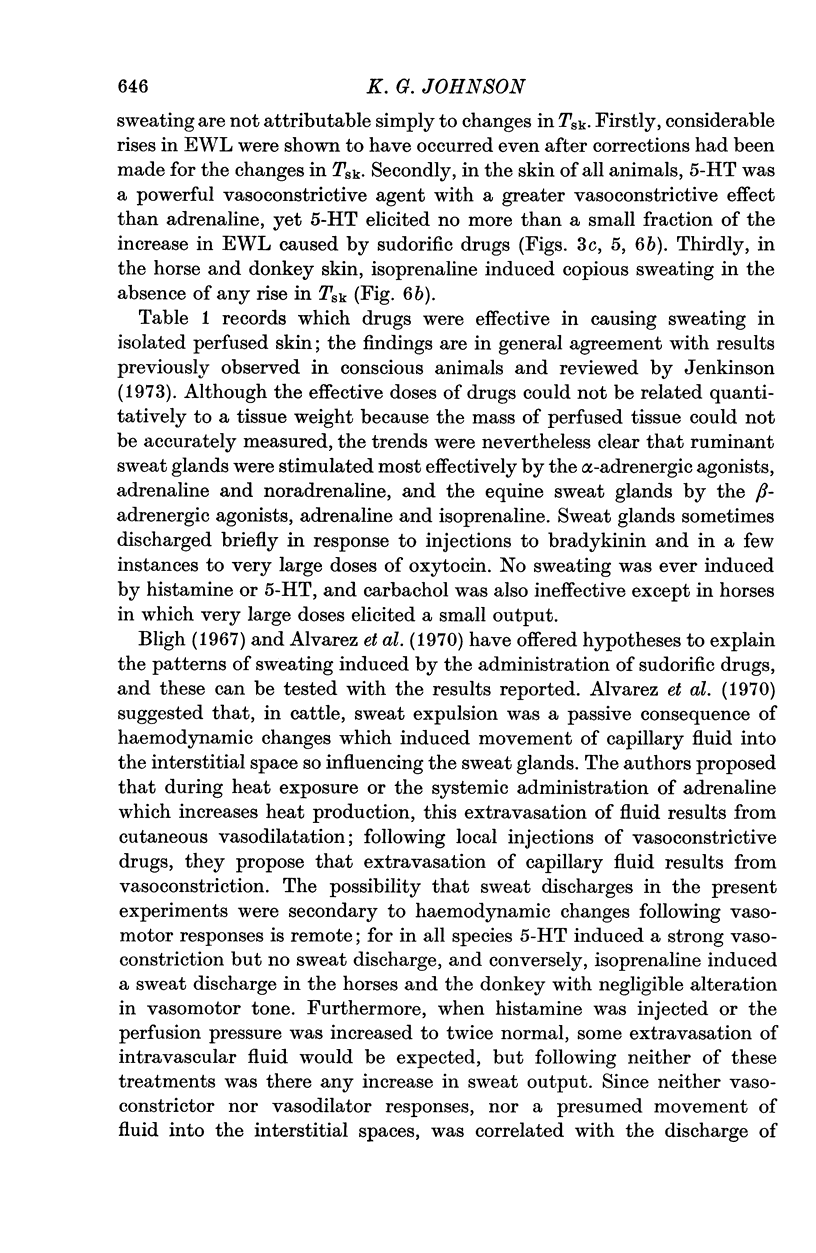
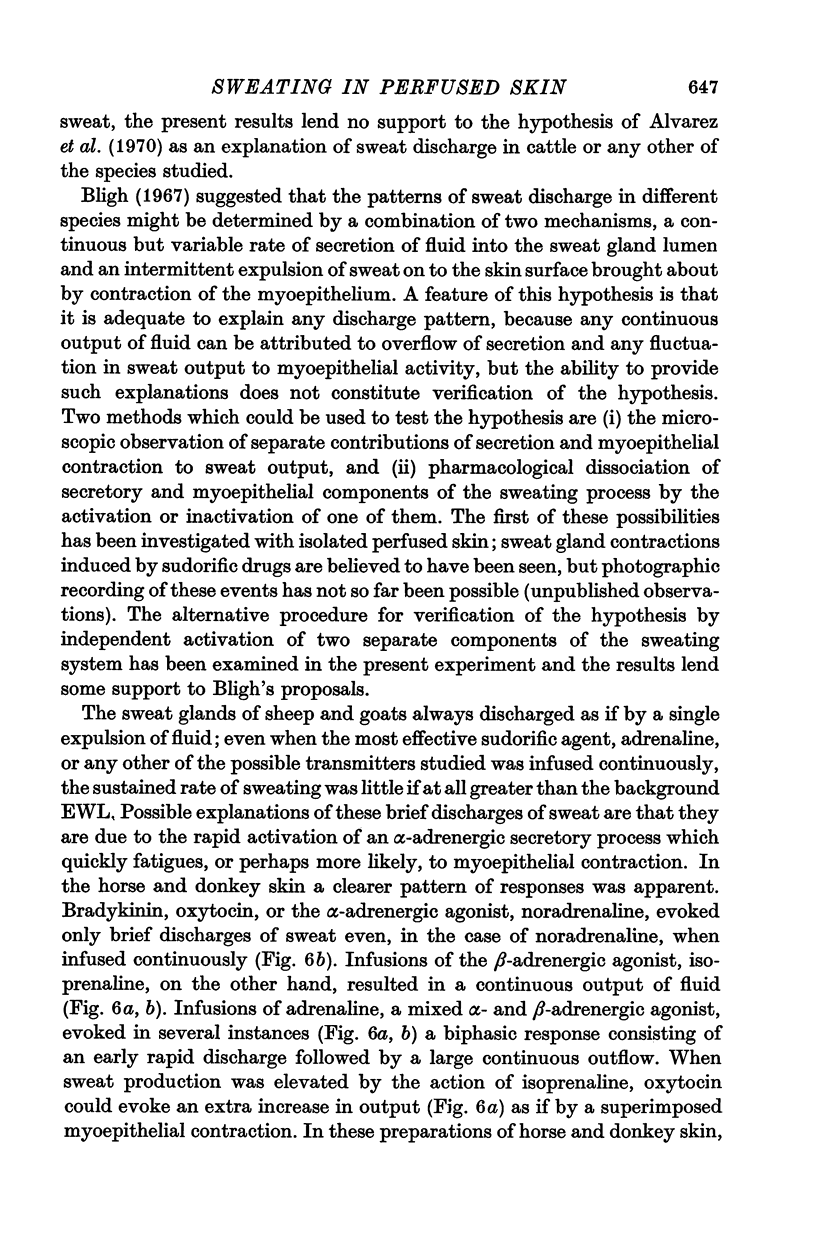
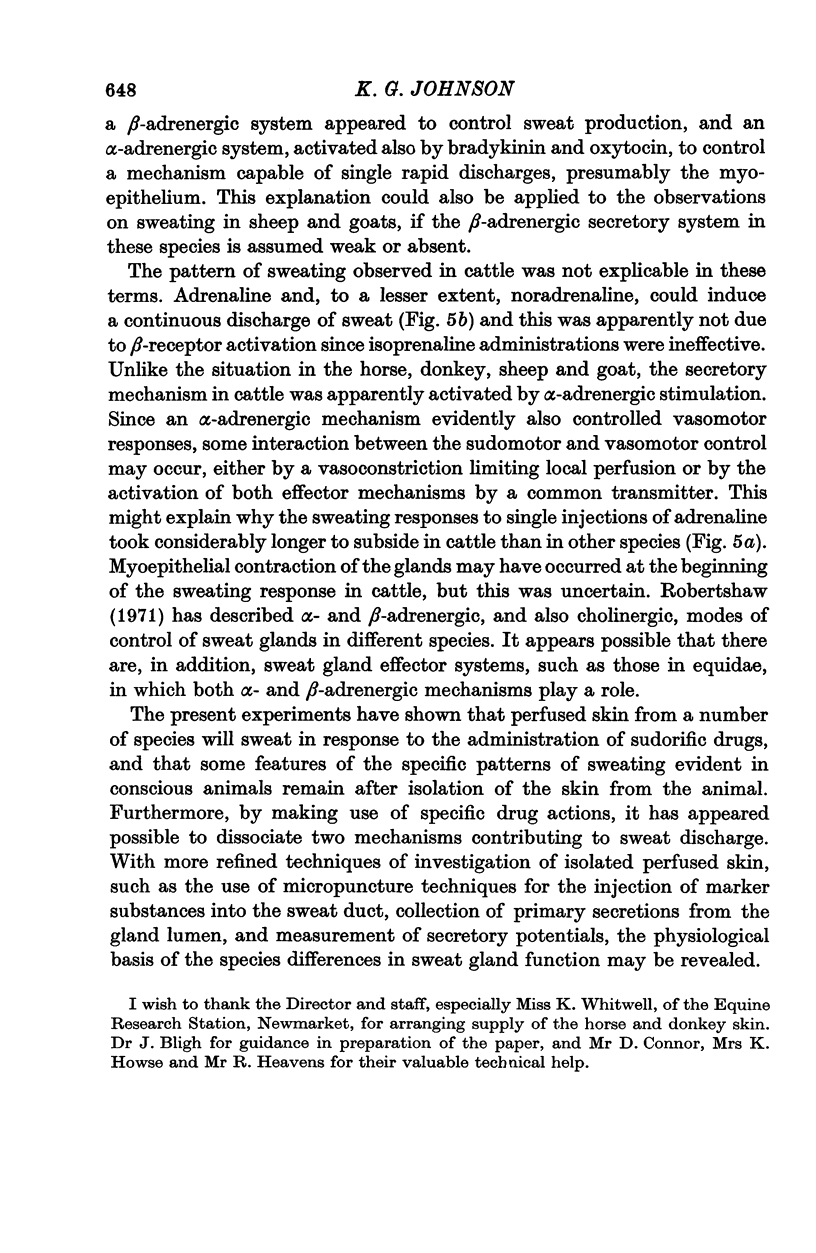
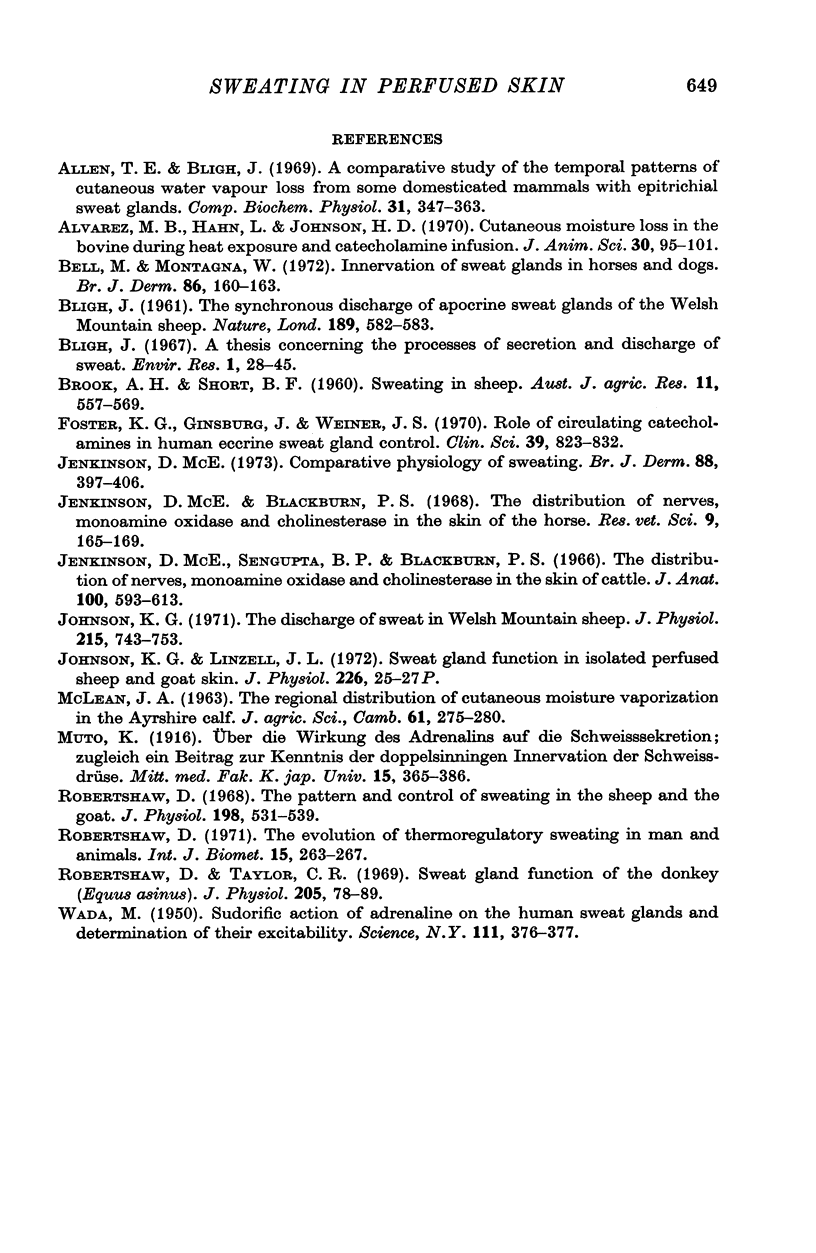
Images in this article
Selected References
These references are in PubMed. This may not be the complete list of references from this article.
- Allen T. E., Bligh J. A comparative study of the temporal patterns of cutaneous water vapour loss from some domesticated mammals with epitrichial sweat glands. Comp Biochem Physiol. 1969 Oct 15;31(2):347–363. doi: 10.1016/0010-406x(69)91659-4. [DOI] [PubMed] [Google Scholar]
- Alvarez M. B., Hahn L., Johnson H. D. Cutaneous moisture loss in the bovine during heat exposure and catecholamine infusion. J Anim Sci. 1970 Jan;30(1):95–101. doi: 10.2527/jas1970.30195x. [DOI] [PubMed] [Google Scholar]
- Bell M., Montagna W. Innervation of sweat glands in horses and dogs. Br J Dermatol. 1972 Feb;86(2):160–163. doi: 10.1111/j.1365-2133.1972.tb16080.x. [DOI] [PubMed] [Google Scholar]
- Bligh J. A thesis concerning the processes of secretion and discharge of sweat. Environ Res. 1967 Jun;1(1):28–45. doi: 10.1016/0013-9351(67)90004-7. [DOI] [PubMed] [Google Scholar]
- Foster K. G., Ginsburg J., Weiner J. S. Role of circulating catecholamines in human eccrine sweat gland control. Clin Sci. 1970 Dec;39(6):823–832. doi: 10.1042/cs0390823. [DOI] [PubMed] [Google Scholar]
- Jenkinson D. M., Blackburn P. S. The distribution of nerves, nonoamine oxidase and cholinesterase in the skin of the horse. Res Vet Sci. 1968 Mar;9(2):165–169. [PubMed] [Google Scholar]
- Jenkinson D. M. Comparative physiology of sweating. Br J Dermatol. 1973 Apr;88(4):397–406. doi: 10.1111/j.1365-2133.1973.tb07573.x. [DOI] [PubMed] [Google Scholar]
- Jenkinson D. M., Sengupta B. P., Blackburn P. S. The distribution of nerves, monoamine oxidase and cholinesterase in the skin of cattle. J Anat. 1966 Jul;100(Pt 3):593–613. [PMC free article] [PubMed] [Google Scholar]
- Johnson K. G., Linzell J. L. Sweat gland function in isolated perfused sheep and goat skin. J Physiol. 1972 Oct;226(2):25P–27P. [PubMed] [Google Scholar]
- Johnson K. G. The discharge of sweat in Welsh mountain sheep. J Physiol. 1971 Jul;215(3):743–753. [PMC free article] [PubMed] [Google Scholar]
- Robertshaw D., Taylor C. R. Sweat gland function of the donkey (Equus asinus). J Physiol. 1969 Nov;205(1):79–89. doi: 10.1113/jphysiol.1969.sp008952. [DOI] [PMC free article] [PubMed] [Google Scholar]
- Robertshaw D. The evolution of thermoregulatory sweating in man and animals. Int J Biometeorol. 1971 Dec;15(2):263–267. doi: 10.1007/BF01803909. [DOI] [PubMed] [Google Scholar]
- Robertshaw D. The pattern and control of sweating in the sheep and the goat. J Physiol. 1968 Oct;198(3):531–539. doi: 10.1113/jphysiol.1968.sp008623. [DOI] [PMC free article] [PubMed] [Google Scholar]
- Wada M. Sudorific Action of Adrenalin on the Human Sweat Glands and Determination of Their Excitability. Science. 1950 Apr 14;111(2885):376–377. doi: 10.1126/science.111.2885.376. [DOI] [PubMed] [Google Scholar]



